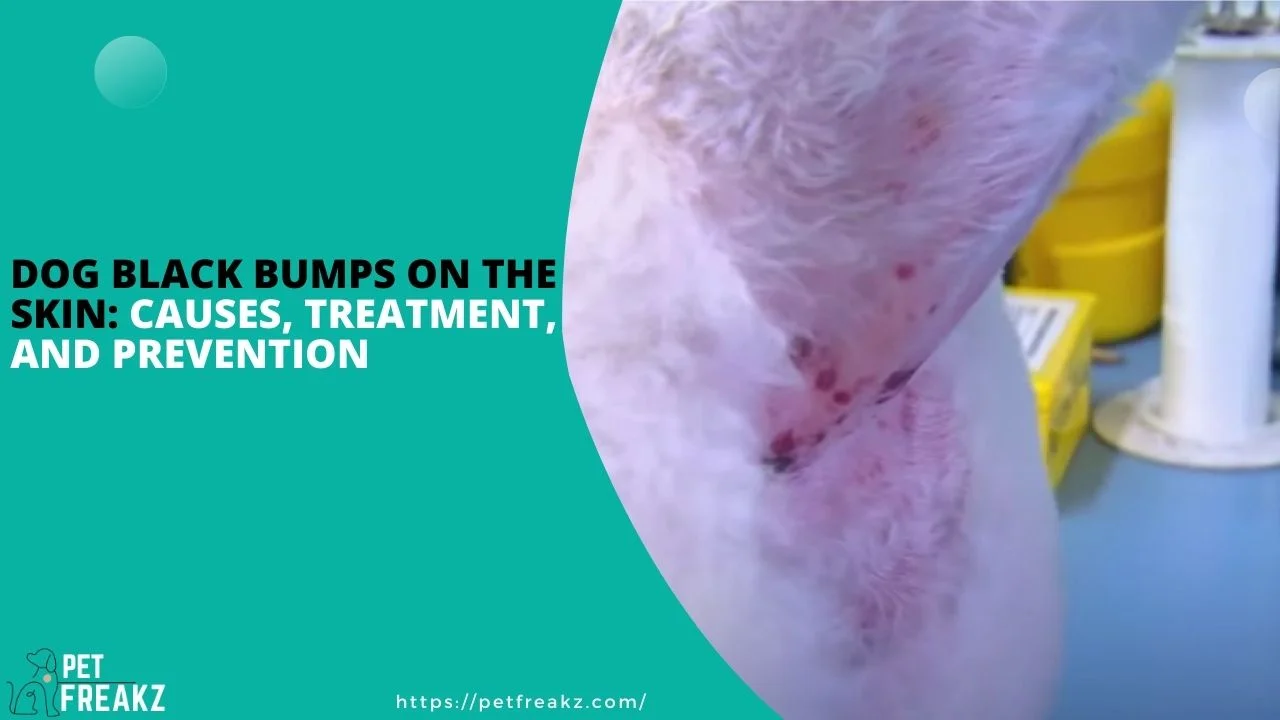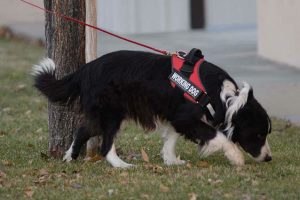Introduction to dog black bumps on the skin
As dog owners, we are always worried about our pets’ health and well-being. One common issue that can cause alarm is the presence of a dog’s black bumps on the skin. These bumps can vary in size, shape, and texture, and may appear anywhere on the dog’s body. In this article, we will delve into the causes, treatment options, and prevention strategies for dog black bumps on the skin.
Table of Contents
Common Causes of Dog Black Bumps on the Skin
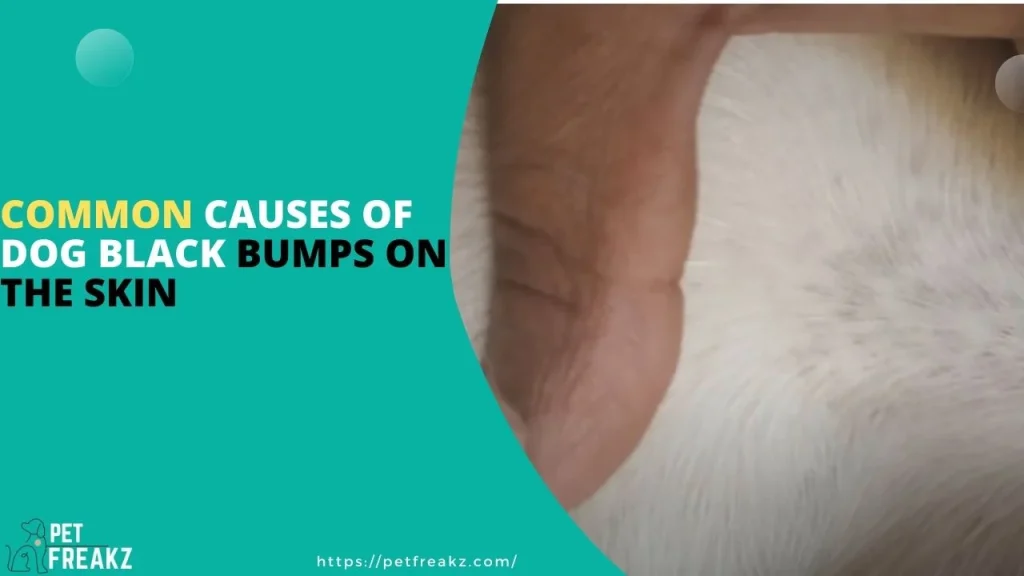
Allergic Reactions
Allergies to food, environmental factors, or certain products can lead to the development of black bumps on a dog’s skin. Identifying the allergen and avoiding it can help prevent future occurrences.
Insect Bites and Stings
Insects, such as fleas, ticks, or bees, can cause irritation and black bumps when they bite or sting your dog. Regular pest prevention is vital to avoid these issues.
Skin Infections
Bacterial or fungal infections can result in black bumps that may be accompanied by redness and swelling. In order to stop the infection from spreading, immediate treatment is necessary.
Sebaceous Cysts
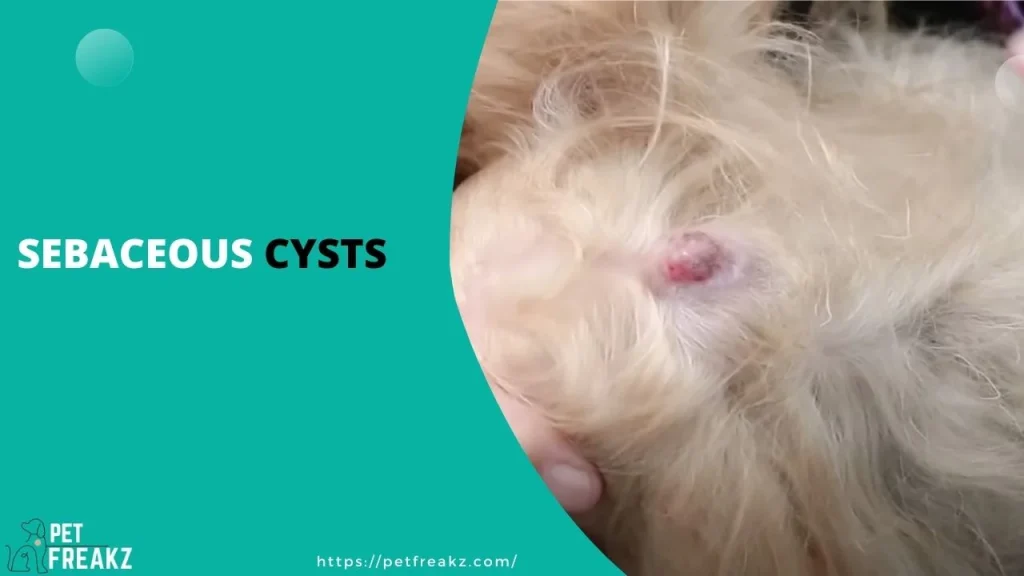
These are benign lumps filled with oily or cheesy material. Though usually harmless, they may require removal if they become inflamed or bothersome for the dog.
Hematomas
Injuries that cause bleeding under the skin can result in blood-filled black bumps known as hematomas. These may require drainage or surgical intervention.
In some cases, black bumps may be a sign of a more serious condition, such as skin cancer. This is why it is important to monitor any changes in your dog’s skin and seek veterinary attention if you notice any concerning symptoms.
Different Types of Black Bumps and Their Characteristics
Dog black bumps on the skin can vary in appearance and characteristics. Some may be small and pimple-like, while others may be larger and more pronounced. The texture of the bumps can also vary, with some feeling soft and fluid-filled, while others may be hard and immovable.
It is important to note that not all black bumps are the same, and their characteristics can provide valuable clues about their underlying cause. For example, if the bump is accompanied by redness, itching, or a foul odour, it may be a sign of an infection. On the other hand, if the bump is smooth and shiny, it could be a sebaceous cyst.
Identifying Dog Black Bumps on the Face, Nose, Head and Different Parts of the Body
Black bumps can appear on various parts of a dog’s body, including the face, head, nose, and paws. Each location may have different implications and require different treatment approaches.
When black bumps appear on a dog’s face, it is important to pay close attention to any changes in behaviour or discomfort, as these could indicate a more serious condition. Bumps on the head and nose should also be monitored closely, as they can be a sign of infection or skin cancer.
Bumps on a dog’s paws are not uncommon and can be caused by a variety of factors, such as allergies, foreign objects, or trauma. It is important to inspect the paws regularly and seek veterinary attention if you notice any changes or if your dog is showing signs of discomfort.
When to be Concerned About Dog Black Bumps on the Skin
While not all black bumps on a dog’s skin are cause for concern, there are certain signs that indicate the need for veterinary attention. If the bump is rapidly growing in size, is accompanied by redness or swelling, is causing your dog pain or discomfort, or is bleeding or oozing, it is important to seek immediate medical attention.
Additionally, if your dog has multiple black bumps appearing all over their body, or if the bumps are accompanied by other symptoms such as weight loss, lethargy, or changes in appetite, It may be an indication of a more serious underlying problem.
How to treat dog black bumps
The treatment options for black bumps on dogs’ skin will depend on the underlying cause of the bumps. In cases of folliculitis or bacterial infections, your veterinarian may prescribe antibiotics or antifungal medications to clear up the infection. In some cases, a topical ointment or medicated shampoo may be recommended to help soothe the skin and promote healing.
For sebaceous cysts, your veterinarian may recommend surgical removal if the cyst is causing discomfort or if it is at risk of becoming infected. However, if the cyst is small and not causing any issues, your veterinarian may advise monitoring it closely and only intervene if necessary.
In cases where the black bump is determined to be cancerous, treatment options may include surgery, radiation therapy, or chemotherapy, depending on the type and stage of cancer.
Preventing Dog Black Bumps on the Skin
While it may not be possible to prevent all black bumps on a dog’s skin, there are steps you can take to minimize the risk. Regular grooming is important to keep the skin clean and free from dirt, debris, and excess oils. This can help prevent clogged hair follicles and reduce the risk of folliculitis.
It is also important to keep your dog’s environment clean and free from potential irritants or allergens. This includes regularly washing their bedding, vacuuming the house, and avoiding exposure to chemicals or substances that could cause skin irritation.
Maintaining a healthy diet and providing regular exercise can also help support your dog’s overall skin health and immune system function, reducing the risk of skin issues and black bumps.
Tips for maintaining good skin health in dogs
In addition to taking preventative measures, there are steps you can take to help maintain good skin health in your dog. Regularly inspect your dog’s skin for any changes, such as new bumps, redness, or irritation. This can help you catch any potential issues early on and seek veterinary attention if needed.
Ensure that your dog is receiving a balanced diet that is rich in essential nutrients such as omega-3 fatty acids, which are known to support healthy skin and coat. Additionally, providing regular baths using a gentle, dog-specific shampoo can help keep the skin clean and free from excessive oils and debris.
Finally, make sure to provide regular flea and tick prevention for your dog, as these parasites can cause skin irritation and lead to the development of black bumps.
When to Consult a Veterinarian for Dog Black Bump on the Skin
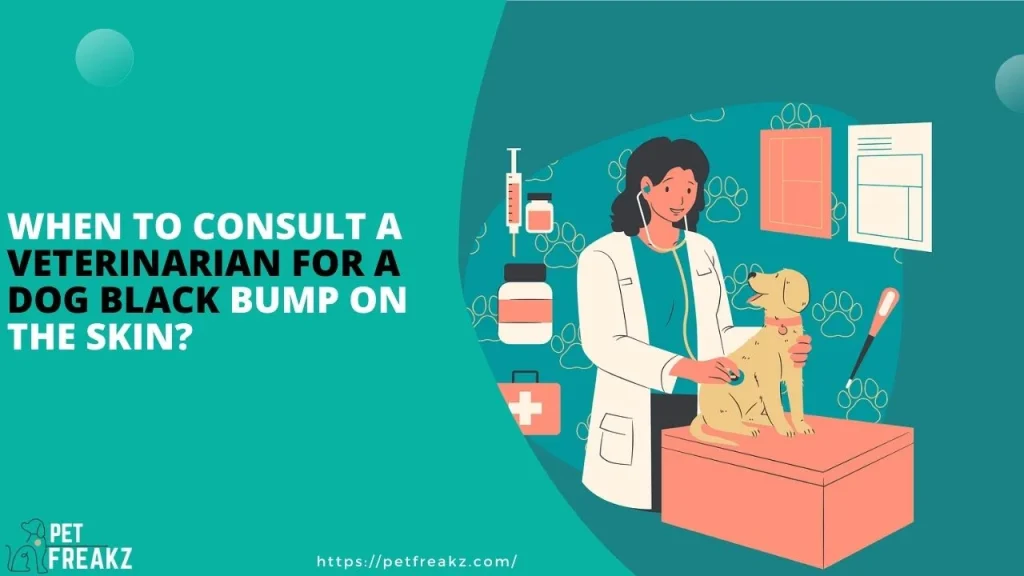
If you notice any changes in your dog’s skin, including the appearance of black bumps, it is always a good idea to consult with your veterinarian. They will be able to examine your dog and determine the underlying cause of the bumps. They may also recommend further diagnostic tests, such as a skin biopsy or blood work, to rule out any underlying health issues.
Your veterinarian will be able to provide you with the most accurate diagnosis and treatment plan for your dog’s specific situation. It is important to follow their guidance and instructions to ensure the best possible outcome for your dog’s skin health.
What are Sudden Lumps on Dog Under the Skin?
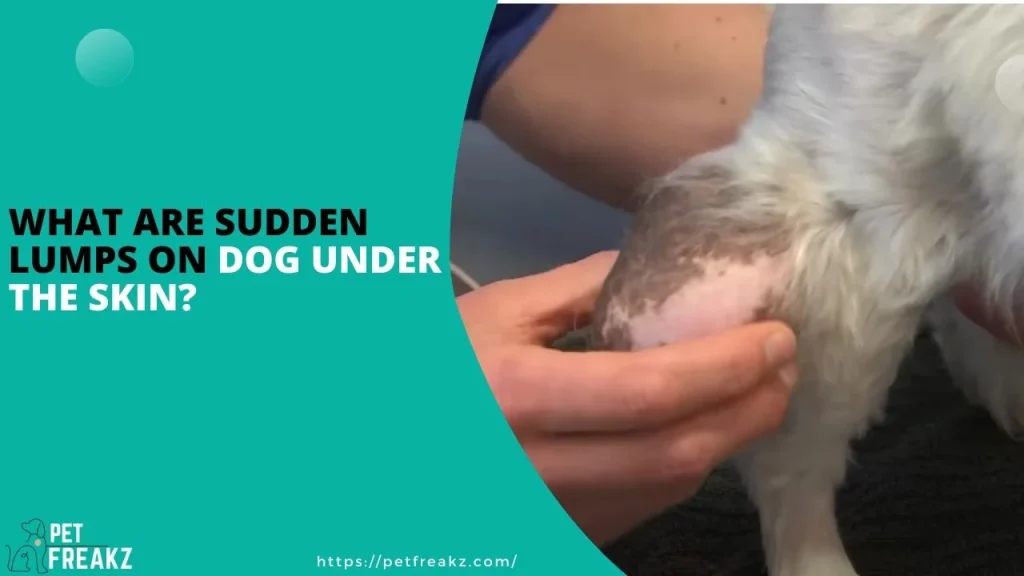
Dog owners may occasionally find palpable masses or lumps under their pet’s skin. These lumps, also known as skin growths or masses, can vary in size, texture, and location. While some lumps are benign and harmless, others might indicate an underlying health issue that warrants attention. Understanding the nature of these lumps is crucial in providing appropriate care and ensuring your dog’s well-being.
Causes of Sudden Lumps on Dog Under Skin
There are various potential causes of sudden lumps on a dog’s skin. Below are some common factors that could lead to the development of these bumps:
- Lipomas – Fatty Tumors: Lipomas are the most common benign soft tissue lumps found in dogs. These fatty tumours often feel soft, movable, and painless, usually occurring just under the skin. While lipomas are generally harmless, they may need surgical removal if they grow excessively or impede your dog’s movement.
- Sebaceous Cysts: Sebaceous cysts result from blocked hair follicles, leading to the accumulation of oils and debris under the skin. These cysts may feel like small, round lumps and are typically not a cause for concern unless they become infected or cause discomfort to your dog.
- Histiocytomas: Histiocytomas are common skin growths in young dogs. They often appear as small, red, button-like lumps and usually resolve on their own without treatment. Although they are usually benign, it’s essential to have them examined by a veterinarian to ensure a proper diagnosis.
- Cancerous Growth: In some cases, sudden lumps on a dog’s skin may be indicative of malignant growths such as sarcomas or carcinomas. It’s vital to have any suspicious lump promptly evaluated by a veterinarian to rule out the presence of cancer.
What does a cancer lump look like on a dog?
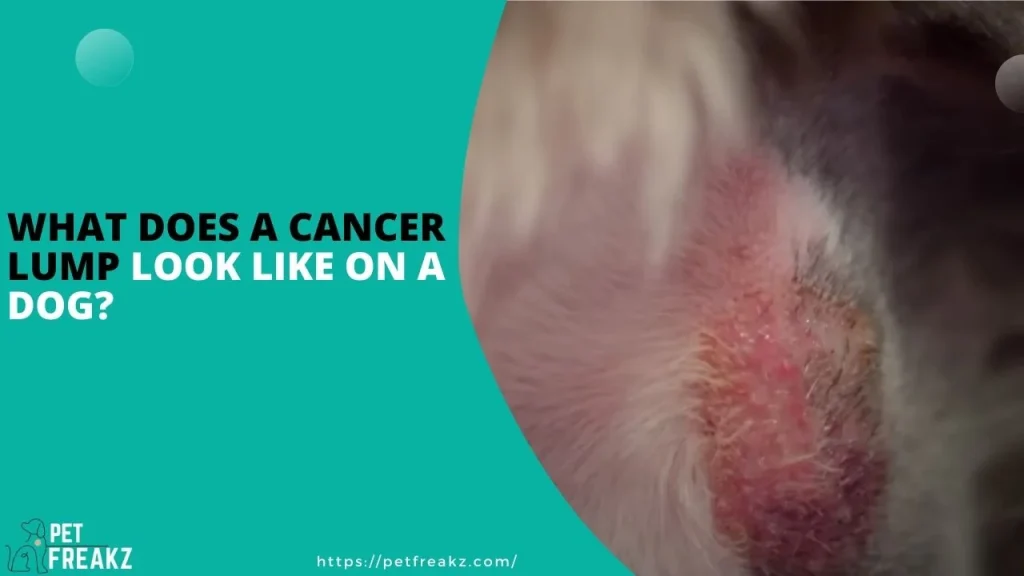
Cancerous lumps often have irregular shapes and sizes compared to benign growths. They may appear lumpy, bumpy, or asymmetrical, whereas benign lumps are usually smooth and even.
Changes in Color or Texture
Pay attention to any changes in the colour or texture of the lump. Cancerous growths may exhibit discoloration, redness, or ulceration, indicating a potential issue.
Rapid Growth
Unlike benign growths that may remain stable in size, cancer lumps tend to grow rapidly over time. If you notice significant growth in a short period, it’s best to have it examined by a veterinarian.
Pain or Discomfort
Some dogs may exhibit signs of pain or discomfort when you touch the lump or the surrounding area. However, not all cancerous lumps are painful, so it’s essential to consider other factors as well.
Conclusion: Taking Care of Your Dog’s Skin and Overall Health
In conclusion, black bumps on a dog’s skin can be a cause for concern, but with the right knowledge and proactive care, you can help keep your furry friend healthy and happy. By understanding the causes, treatment options, and prevention strategies for black bumps, you can take the necessary steps to maintain good skin health in your dog.
Remember, your dog relies on you to take care of their health, so be proactive and attentive to any changes in their skin. With your love and care, your dog can enjoy a lifetime of good skin health and overall well-being.
FAQs About Dog Black Bumps on the Skin
What Does a Lymphoma Lump Look Like on a Dog?
A lymphoma lump on a dog is a swollen, firm lymph node, often painless, found in areas like the neck, shoulders, or knees.
How Do I Know If a Lump on My Dog Is Serious?
If a lump on your dog grows rapidly, changes in size, or causes pain, it may be serious. Consult a vet for proper evaluation.
What Does a Black Pimple on a Dog Mean?
A black pimple on a dog could be harmless or a melanoma. Get it checked by a vet to rule out any health concerns.
Can I use over-the-counter ointments to treat my dog’s black bumps?
While some mild skin issues might respond to over-the-counter ointments, it is essential to consult a veterinarian for proper diagnosis and treatment.
Should I be worried if the black bump on my dog’s skin changes in size?
Any changes in the size, shape, or colour of the black bump should be examined by a veterinarian to rule out potential health concerns.
How can I prevent black bumps caused by insect bites?
Using preventive flea and tick treatments and avoiding areas with high insect activity can help prevent such issues.
Is it necessary to remove sebaceous cysts from my dog’s skin?
Sebaceous cysts are usually harmless, but if they cause discomfort or grow in size, it’s best to consult a veterinarian for appropriate advice.
Can allergies be the primary cause of black bumps on a dog’s skin?
Yes, allergies are one of the common causes of black bumps. Identifying and managing the allergen can help prevent future occurrences.
